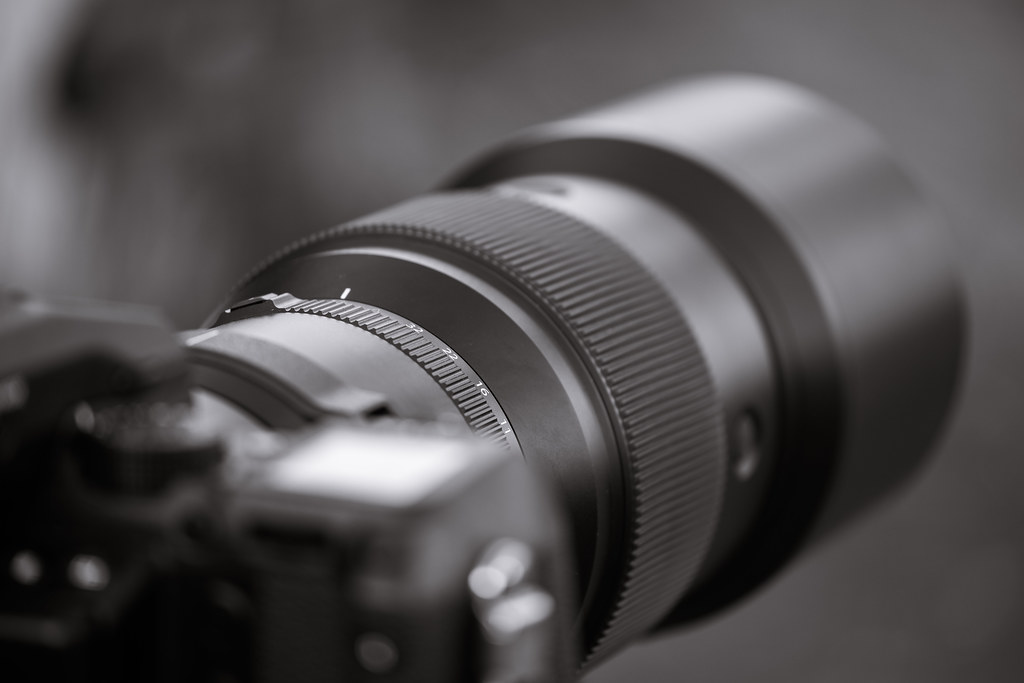GF250mmF4 R LM OIS WR
Testbericht & erster Eindruck: GF250mmF4 R LM OIS WR
Mehr Reichweite: Fujinon GF250mmF4 R LM OIS WR
Das neue GF250mmF4 R LM OIS WR und der optionale GF1.4x TC WR Telekonverter sind das erste echte Telefoto-Angebot für das sich rasch entwickelnde GFX-Mittelformatsystem von Fujifilm. Mit beeindruckender Detailauflösung und dreidimensionaler Motivwiedergabe entspricht das mit knapp 3300 EUR noch vergleichbar preisgünstige GF250mm einem 198-mm-Objektiv im Kleinbildformat. Diese Reichweite kann mit dem 1,4-fach-Telekonverter noch auf 350 mm (277 mm KB-Äquivalent) erhöht werden kann. Ergänzt wird das Ganze durch zwei Makro-Erweiterungsringe, die mit schon vorhandenen GF-Objektiven zusammenarbeiten und das GF120mmF4 in ein echtes 1:1-Makroobjektiv verwandeln.
Ist es das wert? Dieser erste Testbericht wird Ihnen die Entscheidung leichter machen. Er basiert auf Vorserienmustern des GF250mmF4 R LM OIS WR, GF1.4x TC WR, MCEX-18G WR und MCEX-45G WR.
von Rico Pfirstinger
Das neue GF250mmF4 R LM OIS WR ist ein beeindruckendes Objektiv mit einer beeindruckenden Größe. Doch es sieht schwerer aus als es sich anfühlt. Mit ca. 1,4 kg ist es zwar kein Leichtgewicht, lässt sich jedoch auch ohne Stativ bequem bedienen. Dank des eingebauten optischen Bildstabilisators (OIS) gerieten selbst mit nur 1/20 s aus der Hand gemachte Aufnahmen absolut pixelscharf – nicht schlecht für ein Objektiv mit einem Kleinbildäquivalent von immerhin 198 mm und einem Bildwinkel von lediglich 12,5 Grad.
Das neue GF250mmF4 R LM OIS WR, aufgenommen mit einem XF80mmF2.8 R LM OIS WR Macro an einer X-H1
Stativ – ja oder nein?
Ich musste das Objektiv im Verlauf meines etwa zweieinhalb Wochen dauernden Tests kein einziges Mal von einem normalen Stativ aus einsetzen. Stattdessen verwendete ich ein stabiles Carbon-Einbeinstativ, um mit dem schwenkbaren LCD-Bildschirm der GFX 50S bequem aus tiefen Blickwinkeln zu fotografieren. Das GF250mm ist hierfür mit einer Stativschelle ausgestattet, die mit einer Hand in Sekundenschnelle abgenommen werden kann. Sie können dabei auch die Halteschraube lösen und die Kamera-Objektiv-Kombination innerhalb der Schelle drehen, um rasch zwischen Aufnahmen im Hoch- und Querformat zu wechseln.
GFX 50S mit GF250mmF4 R LM OIS WR und GF1.4x TC WR Telekonverter Den Rest des Beitrags lesen »
First Look Review: Fujinon GF250mmF4 R LM OIS WR
Reaching Out: GF250mmF4 R LM OIS WR
The new GF250mmF4 R LM OIS WR and the optional GF1.4x TC WR teleconverter lens bring genuine telephoto capability to the evolving Fujifilm GFX medium format system. Featuring impressive detail resolution and three-dimensional subject rendering, the rather moderately priced GF250mm equals a 198 mm lens in 35 mm „full-frame“ terms, and its reach can be stretched to 350 mm by attaching the new 1.4x teleconverter. Fujifilm’s GF product introductions are completed by two macro expansion tubes that work with almost all existing GF lenses and can turn the GF120mmF4 into a true 1:1 macro lens.
So is it all worth it? You should be able to decide for yourself after reading this first-look review based on pre-production samples of the GF250mmF4 R LM OIS WR, GF1.4x TC WR, MCEX-18G WR and MCEX-45G WR.
by Rico Pfirstinger
The new GF250mmF4 R LM OIS WR is an impressive lens with an impressive size, so I was surprised to learn that it looks heavier than it actually feels. At approx. 1.4 kg, it certainly doesn’t fit into the „lightweight“ category, but I could easily handle it without a tripod, and using its built-in 5 stop optical image stabilizer (OIS), I accomplished hand-held shots as slow as 1/20 s with perfectly pixel-sharp results. That’s pretty good for a lens with a 35 mm „full-frame“ equivalent of 198 mm and an angle-of-view of merely 12.5 degrees.
The new GF250mmF4 R LM OIS WR, shot with an XF80mmF2.8 R LM OIS WR Macro on my X-H1
Tripod Or Not?
I didn’t use the lens on a tripod during my two-and-a-half weeks of playing with a pre-production copy, but I usually opted to put it on a carbon monopod. This allowed me to comfortably shoot from lower angles using the camera’s up-tilting rear LCD screen. To facilitate this, the GF250mm comes with a detachable tripod/monopod collar which can be single-handedly removed in a matter of seconds. As usual, you can loosen the holding screw and rotate the camera-lens combo in the collar to quickly change between landscape and portrait orientation.
My GFX 50S with the GF250mmF4 R LM OIS WR and the GF1.4x TC WR teleconverter mounted on a tripod for staging purposes. While my standard Arca Swiss plates from Sirui fit well under the tripod collar, I assume that Fujifilm will offer their own Arca-type plate as an accessory, like they did for the XF100-400mmF4.5-5.6 R LM OIS WR (which incidentally is the lens I used to take this picture).



